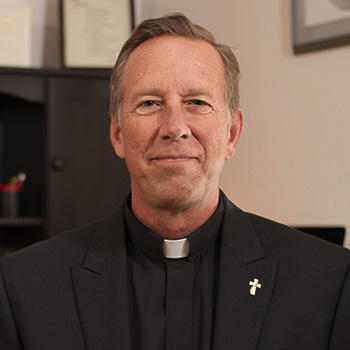The desert is a place of harshness, trial, desolation, and isolation. I’ve been in the desert, as have you, as has every Christian. It’s a place where the wind is witheringly hot in summer and biting cold in winter. It’s lonely. It’s painful. It can be frightening. The only solution is the saving power of Christ.
By Deacon Frederick Bartels
20 March 2018
Do you see yourself as walking through the desert or lost in it?
One does not have to walk through the sand to experience the desert. It’s here, in the world. It’s in culture. It’s in our homes, our families, our marriages. It’s in our workplace. It’s in the city, the suburb, in every small town. It’s in the country.
The desert arrives when tragedy strikes. It appears in the face of failure. The bitting wind returns when we are injured by others.
But the desert is not nothing but pain. It’s also a place of consolation. It’s a place of value. There’s no consoling beauty like the enormous color of a desert sky as the sun falls to the horizon. There’s nothing more stupendous than a desert valley after a spring rain, overflowing with the astounding color of new blooms.
It’s also a place of purification—and in that, too, is value. In the solitude and silence of the desert, we are taken out of ourselves and discover a new way of seeing, hearing and living. The emptiness of the desert opens our minds and hearts to the voice of God.
The desert, then, can be a place of great goodness. It can strengthen us spiritually. It can be a vital means of connection to the divine Other who desires to draw us to himself.
But there’s no denying that our walk through the desert is difficult.
Sometimes people get lost in the desert. Has this ever happened to you?
When we fall into sin, the desert swallows us. We become trapped. Stranded. Paradoxically, sin can at first seem a welcome reprieve from the sand and wind. It can seem to provide a drink to the parched and thirsty.
That’s the treachery of sin. That’s its trickery. Its seduction.
In the Book of Numbers (21:4-9), the Israelites have been liberated from Egyptian slavery and are journeying through the desert toward the promised land. After encountering the harshness of the desert landscape, with its stark lack of comfort and food, they grow impatient along the way and complain against God and Moses. As a consequence for their sin of distrust and unfaithfulness, God sends seraph serpents with a poisonous bite as punishment.
Sin always brings consequences. It poisons our bodies, minds and hearts.
On the other hand, the suffering sin brings often has the effect of opening our eyes. Of clarifying our need for God and his mercy. That’s what happened to the people Israel. They realized they had sinned against God. They asked Moses to intercede for them, that their suffering might end.
What was God’s response?
“Make a saraph and mount it on a pole, and whoever looks at it after being bitten will live.” Moses accordingly made a bronze serpent and mounted it on a pole, and whenever anyone who had been bitten by a serpent looked at the bronze serpent, he lived.
For God’s people Israel, the remedy for the poison of sin was a seraph on a pole. To experience its healing, the Israelites had to have faith in God’s word and trust in his promises.
This is a type or foreshadowing of Christ and the saving power of his cross.
As the people Israel looked upon the saraph on a pole and were healed, we are healed by looking in faith upon Christ crucified. The cross is the instrument of salvation. It is the Person of Christ who is Salvation.
In our case, as Catholics and Christians, the extent of the healing we experience is much greater than it was for the Israelites. In their case, the saraph healed them of the physical and temporal consequences of their sin—they didn’t die from the poisonous bites. Their physical health was restored.
In our case, Christ crucified heals us of the eternal consequences of sin. Jesus restores us spiritually. He gives us new and eternal life. This moment, in faith we share in his resurrection to everlasting life.
All this is made possible by Christ’s saving passion, death, and resurrection—what we call the Paschal Mystery.
As Jesus said in the gospel, “When you lift up the Son of Man, then you will realize that I AM” (Jn 8:28).
As Christians, we journey through the desert, through the world, this valley of tears, toward the Promised Land. And this Promised Land is not a place. It’s not a state of mind or a location on the Earth or a mere concept. The Promised Land is a Person, the Person of Jesus Christ.
When you are with Jesus, you will never be lost in the desert. Although, for now, you must walk through it.
And that is much of what Lent is about.
Learn how to make your Lent more fruitful.

Deacon Frederick Bartels is a member of the Catholic clergy who serves the Church in the diocese of Pueblo. He holds an MA in Theology and Educational Ministry, and is a Catholic educator, public speaker, and evangelist who strives to infuse culture with the saving principles of the gospel. For more, visit YouTube, iTunes and Twitter.

Leave a Reply